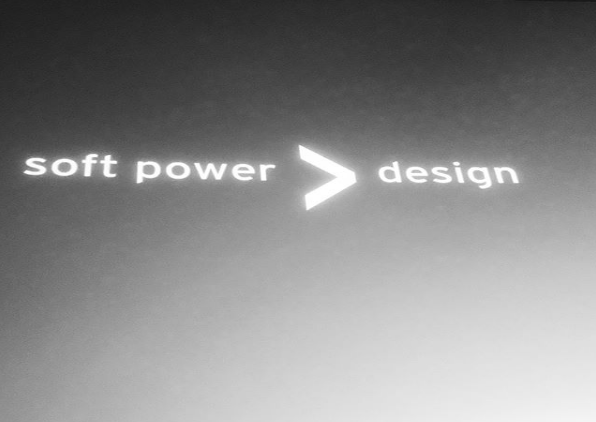
Jan
When Design Looks Too Good
[responsivevoice_button voice=”UK English Female” buttontext=”Listen to Post”]
Last November I attended the REACH Accelerating Creative Leadership Conference, the first of it’s kind, fully dedicated to helping design professionals reflect upon the challenges and opportunities in creative leadership.
One of its presenters Moira Cullen presented in what can only be called a master class. Soft is the New Strong: 21st Century (Design) Leadership traversed human evolution, the art of war, negotiating power, and how design as a soft kind of power gathers all these facets.
During Q&A, I asked her how to address a client who is skeptical of design when it looks ‘too good.’ Cullen suggested going deeper and asking the client what’s producing this kind of anxiety. Because if the design were taking shape to fulfill a need, it wouldn’t produce so much worry. She answered the question fairly well. In many ways, design work at this level can feel like a therapy session for our clients. But it also seemed this was unfamiliar territory to Cullen. She has worked for brands like Hershey and Coca-Cola. She doesn’t appear to struggle much with this problem. However, I have.
”How do we marry linear and nonlinear thinkers? The worlds of social justice/radicalism/socialism but only see good design as dispensible aesthetics vs. the world of corporate-minded designers who have a moral compass, but don't necessarily understand the motives of social radicalism.
Working as a graphic designer in Washington, D.C. means working with nonprofit and government organizations that do not regularly associate high-end design and the formal design process with a public or social good. Sure, good design is fine for fashion or architecture. But good design isn’t needed for our lil’ nonprofit, government agency, or political movement. We care about the people! Not aesthetics! Good design produces a kind of anxiety around looking too polished, too corporate, too expensive. And in spaces that pride themselves on their anti-corporate environment, elevating design to a place of power threatens that.
It may have a lot to do with the fact that since the mid-20th century, contemporary design has aligned itself with corporations and capitalism. If you want to depict a corporate villain in a Hollywood movie, you put them in severe modernist attire and place them in a modernist home or building.
But there are a few examples where, when design was centered, political engagement changed. Take Jacobin magazine. Its founder confessed that when they hired Remeike Forbes — Jacobin‘s creative director and only full-time employee — the socialist-minded publication, has taken theories of socialism from a relic of the early 20th century, to a relevant part of political discourse for the 21st century. It’s rare for a socialist to acknowledge that design not only makes a difference but should be paid full-time.
Become a Jacobin Comrade today! pic.twitter.com/wuL06Euqmw
— Jacobin (@jacobinmag) December 4, 2017
But there are still rifts in perception. Designers are often pro-corporate. They know corporations have money, and designers need to get paid. But social scientists, political scientists, and historians tend to be skeptical of design’s impact. Or they associate questionable design with a conspicuously consumptive creative class.How do we marry linear and nonlinear thinkers? The worlds of social justice/radicalism/socialism but only see good design as dispensible aesthetics vs. the world of corporate-minded designers who have a moral compass, but don’t necessarily understand the motives of social radicalism.
”Good design produces a kind of anxiety around looking too polished, too corporate, too expensive. And in spaces that pride themselves on their anti-corporate environment, elevating design to a place of power threatens that.
During her presentation, Cullen highlighted the thought process between linear and nonlinar thinkers. Cullen noted that while these two forms of thought process drive one another crazy, they ultimately need one another to survive. I see them in the same sinking boat of limited resources, growing income inequality, nationalism, economic instability, environmental violence, gentrification, and exploitation. One set of thinking can no longer afford to ignore the other. If you want people to buy your stuff, — the high-quality, high-margin stuff — you’ve got to address income inequality. If you want to demilitarize nations, you have to lock arms with people who agree but happen to wear Gucci.
And that’s not called being moderate (’cause that ish ain’t workin’). It’s called for standing for something — standing with people — who are less preoccupied with where someone shops. And more attuned to the real power of good design.
When I think of taking traditional design methods and teachings, I think of Audre Lorde’s quote about the master’s house:
“For the master’s tools will never dismantle the master’s house. They may allow us to temporarily beat him at his own game, but they will never enable us to bring about genuine change. Racism and homophobia are real conditions of all our lives in this place and time. I urge each one of us here to reach down into that deep place of knowledge inside herself and touch that terror and loathing of any difference that lives here. See whose face it wears. Then the personal as the political can begin to illuminate all our choices.”
I often wonder if it’s possible to dismantle the house of design, by rebuilding it with design. Design as a tool for social justice is fairly new. It has historically been used to promote war, violence, and mass consumption. But it is one of few tools where we can — by first recognizing the limits of our power — work with one another to break down systems, reimagine a future that is better, and hope that whatever we create together will last a long time.


